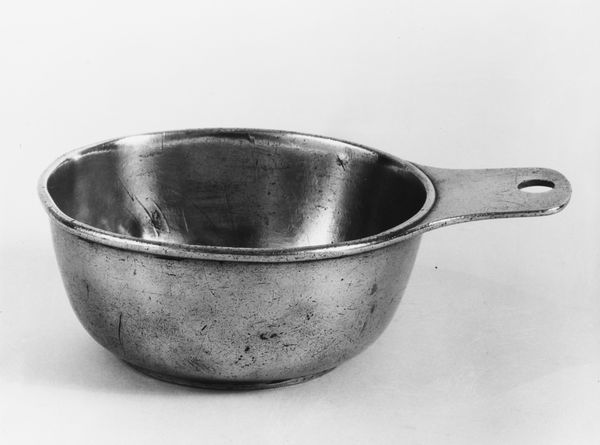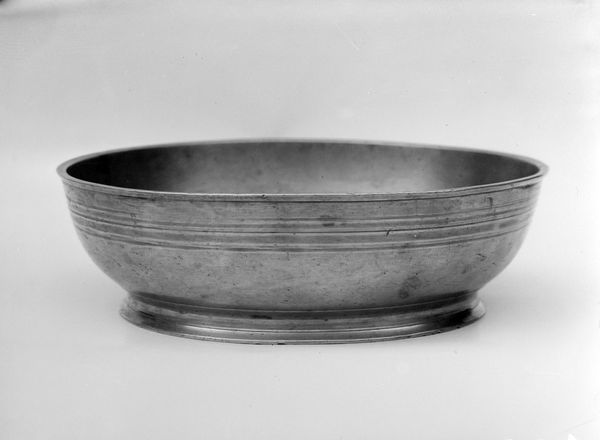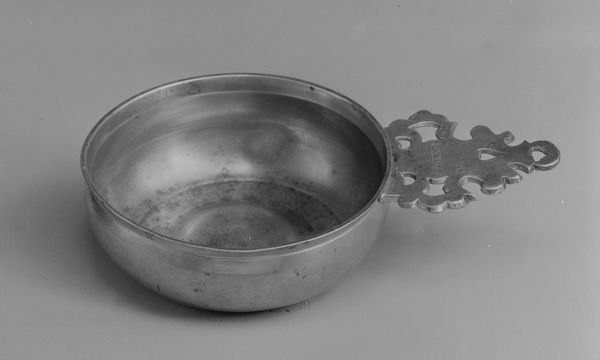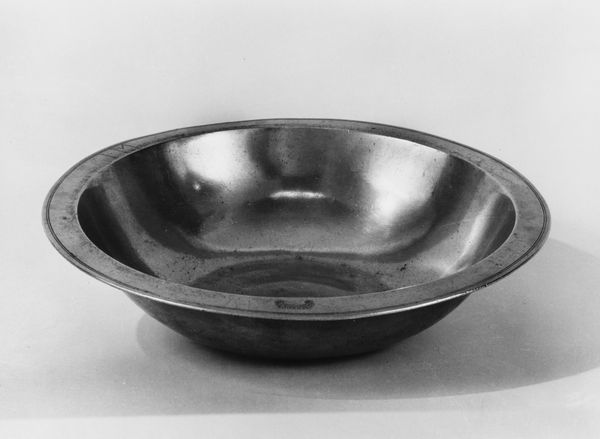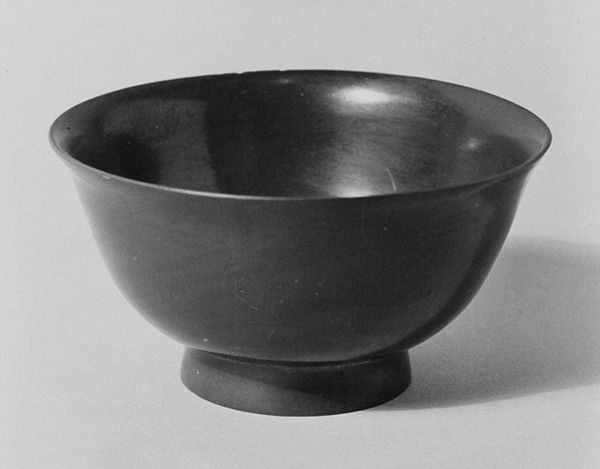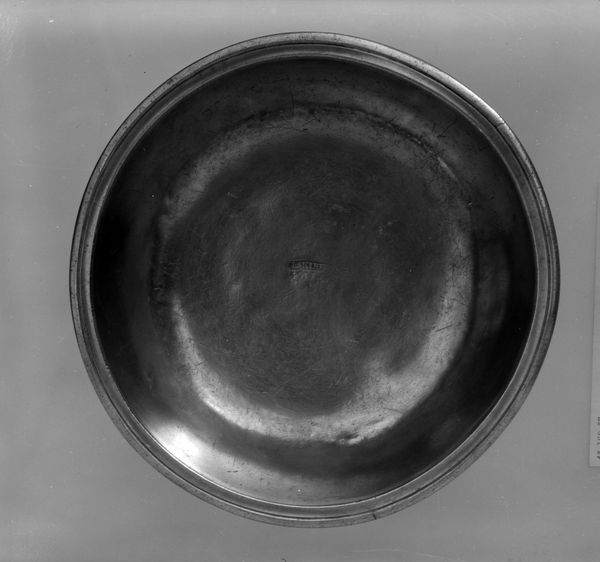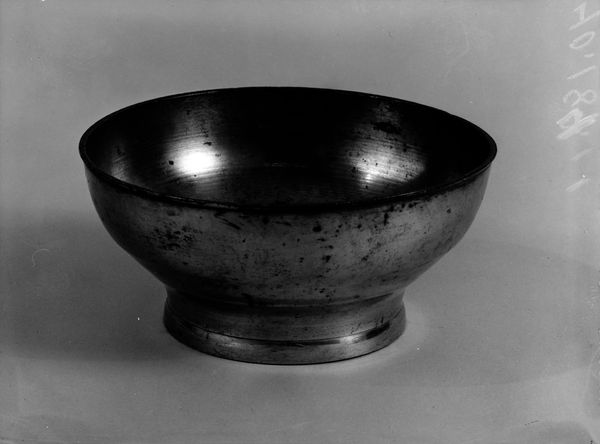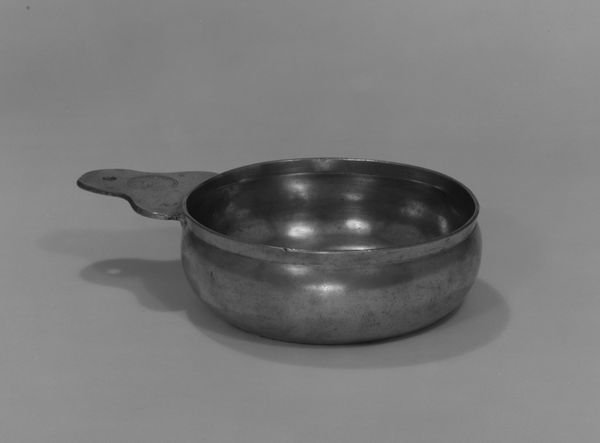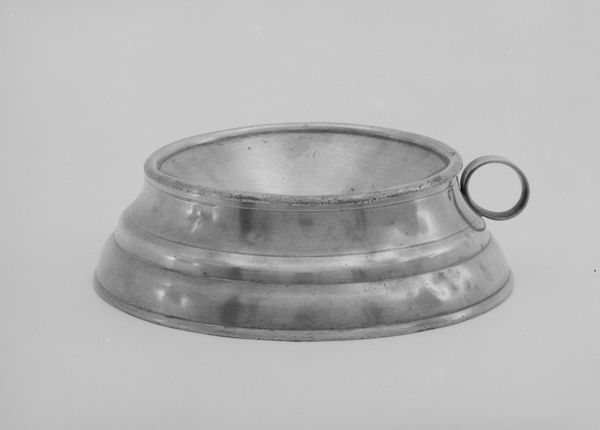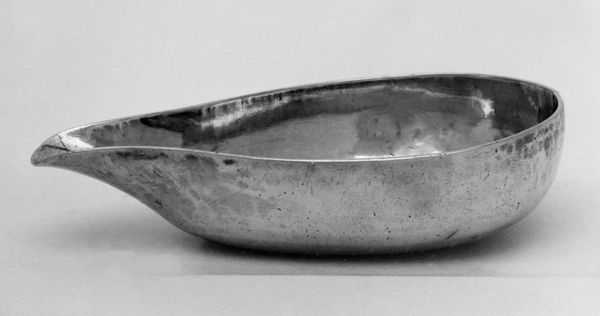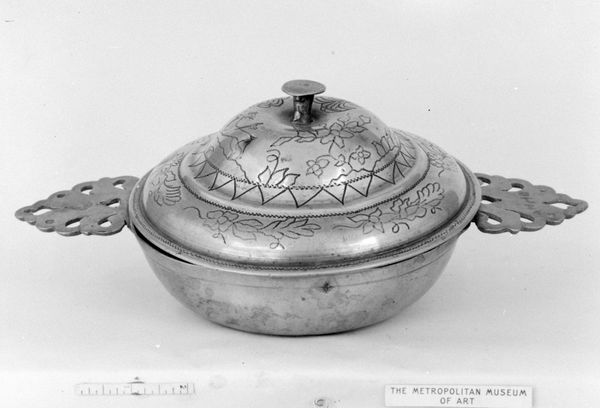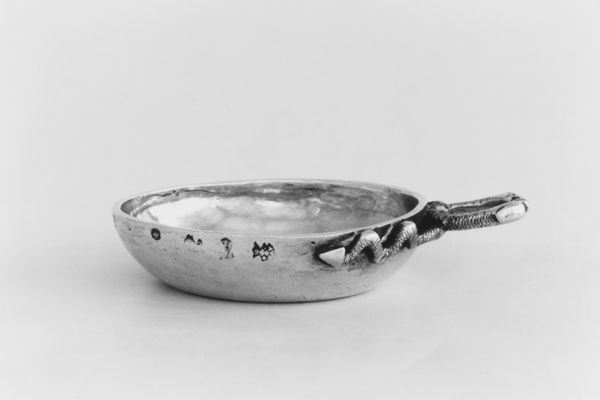
metal, sculpture
#
metal
#
sculpture
#
sculpture
Dimensions: Diam. 4 in. (10.2 cm)
Copyright: Public Domain
Curator: Here we have a porringer, likely crafted between 1810 and 1850 by Thomas Danforth Boardman. It's a metal piece, currently held at the Metropolitan Museum of Art. Editor: My immediate thought is, there's an aura of simple domesticity about this object, something universally human about this form that stretches back millennia, like some simple emblem of sharing or sustenance. Curator: Exactly! The porringer speaks volumes about the social history of dining. It wasn't merely functional; the material itself, probably pewter, reflected a certain status. Boardman, as a metalworker, operated within a network of trade, supply chains, and skilled labor. The availability and cost of metal were very much factors influencing design and production. Editor: And look at the handle; it is adorned with these curlicue, almost foliate designs. They remind me of early American stencils, even the flourish of colonial-era script. Is this purely ornamental, or did these motifs carry deeper symbolism in their time? I imagine warmth, nurturing…perhaps it functioned almost as a miniature ceremonial bowl. Curator: It would have served for children and invalids as an everyday object, which often gets missed. It demonstrates the division of labour within the household too, in caring and the need to make food easy for some individuals to eat. Think of the various stages the metal would have undergone – casting, turning, polishing - each requiring specific expertise. And each mark or small imperfection bearing testament to a person’s actions during the process of its manufacture. Editor: Yes, one can almost feel the artisan’s hands shaping and refining the metal. I now think of alchemists even; they may well have used very similar objects, transforming base metals into precious forms, as much through science as the intent. I wonder too, about any marks it has retained, stains of foods and so on, faint palimpsests telling of generations of daily nourishment. Curator: We forget too easily about the waste, consumption and ultimate discarding of the object at the end of its life as a design object; each stage so integral to its understanding and interpretation. Editor: Absolutely, a little object speaking volumes about our shared heritage. Thanks to considering the work in tandem I'm not only seeing how people make things, but what values were shared in the American household at that moment.
Comments
No comments
Be the first to comment and join the conversation on the ultimate creative platform.
